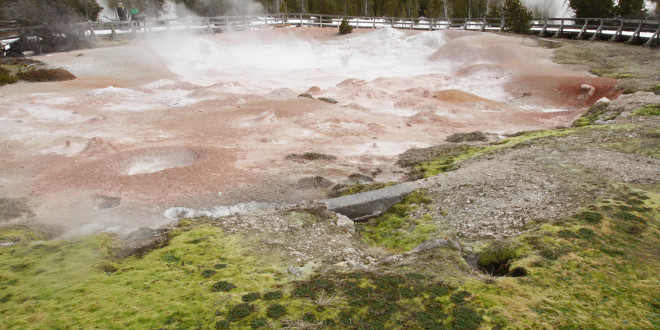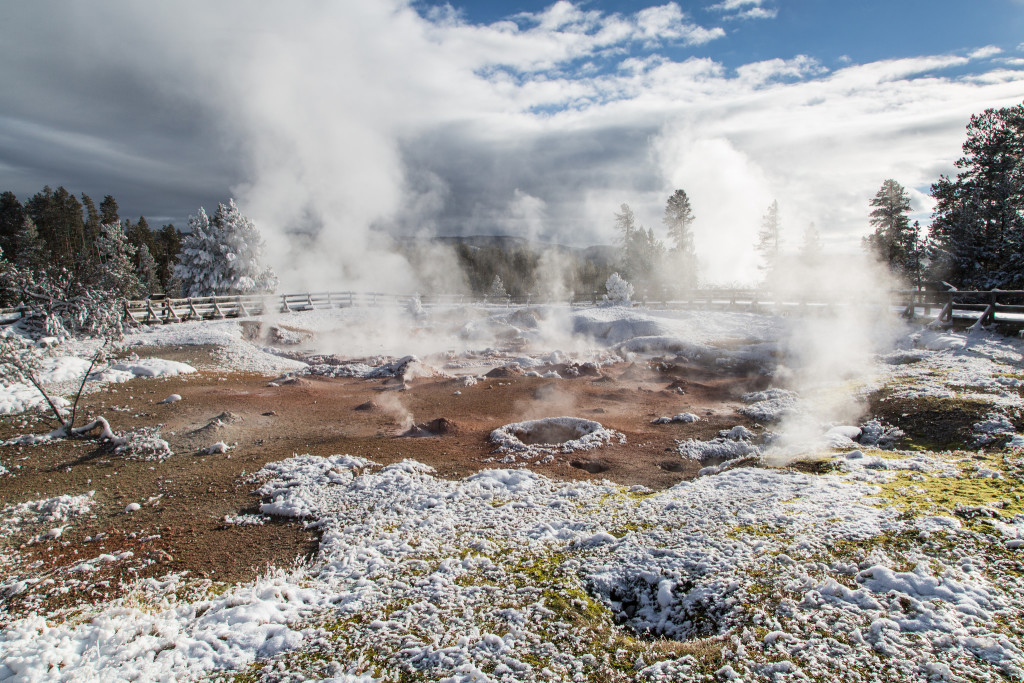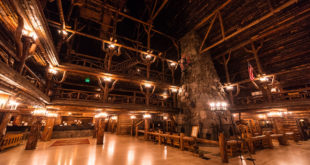The Fountain Paint Pot area is the undoubted star of the Lower Geyser Basin and ranks as one of the best spots in Yellowstone National Park.
It is, in a sense, a counterpart to the Mud Volcano area between Lake Village and Canyon Village, but Fountain Paint Pot entices a different type of interest.
In the first place, the mud in Fountain Paint Pot exhibit a range of color beyond the bubbling beige in Mud Volcano. This is due to the presence of minerals like clay, opal, and quartz. The mud runs the gamut from pearly white to peachy pink, even orange-red. Indeed, Red Spouter, a feature adjacent to the main Fountain Paint Pot, lives up to its name.
These colors have stayed constant throughout the years. Mineralogist Albert C. Peale took note of the features while journeying with the 1871 Hayden Geological Survey, as noted in Marlene Deahl Merrill’s Yellowstone and the Great West:
Above [Fountain Geyser H] we came to mud springs, some of which were red, some pink, and others white … {The mud is all… consistencies. The steam escaping through the mud has reduced it to an extreme degree of fineness, and in pushing its way through some places throws it back in forms resembling the leaves of a lily} (145, Merrill’s numbering).
Although the Fountain Paint Pot and other muddy features have endured, they have done so with a great deal of variance. Like any hydrothermal feature, Fountain Paint Pot depends on water, and depending on the season there is more water or less.
Generally, in spring and early summer, Fountain Paint Pot is reliably soupy, churning with escaping gas and superheated mud. Red Spouter is at its peak when the whole Park is inundated with snowmelt, when prevailing conditions are cool.
As summer marches on, however, Fountain Paint Pot starts to dry up. The mud starts to cake around the edge, and Red Spouter transforms (at least in action) into Red Roarer—a steaming fumarole in a mound of red dirt. And as winter rolls around, Fountain Paint Pot starts to harden up, though the snow can’t do much to curb the awesome system of heat just beneath Fountain’s mud.
In addition to Fountain Paint Pot, there are several other stupendous attractions in the area. Silex Spring, for instance, is a hot spring of incredible blueness, which attests to its remarkable heat and its pristine waters. Nearby Celestine Pool is just as incredible.
Fountain Paint Pot is also home to several geysers, including perennial performer (and Park favorite) Clepsydra Geyser (shown above). The name, which is Greek for “water clock,” is rather appropriate, as this feature seemingly keeps time with its near-constant eruptions.
Besides the geysers and the mud, Fountain Paint Pot is also home to lovely swaths of bacteria mats, which run the gamut from rust-orange to burnt umber.
Be warned if you’re planning to visit Fountain Paint Pot: it’s a popular stop for people, since it’s relatively small and easy to walk around. If you want peace and quiet while you tour Fountain Paint Pot, and extra time to take it all in, try visiting in the early morning, especially in the summertime.
 Yellowstone Insider Your Complete Guide to America's First National Park
Yellowstone Insider Your Complete Guide to America's First National Park







You must be logged in to post a comment.